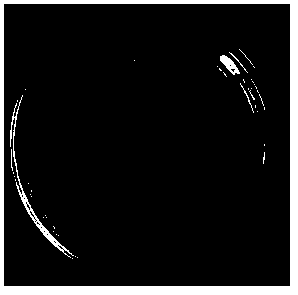Method for expanding reproduction of ralstonia solanacearium bacteriophage
A R. solanacearum and phage technology, which is applied in the field of phage expansion and reproduction of R. solanacearum, can solve the problems of preventing and controlling the re-infestation of objects and restricting the development of phages, and achieve the effect of avoiding re-infestation
- Summary
- Abstract
- Description
- Claims
- Application Information
AI Technical Summary
Problems solved by technology
Method used
Image
Examples
Embodiment 1
[0021] 1. Acquisition of R. solanacearum: From naturally occurring tobacco plants, the dilution coating separation method is used to isolate, and a single colony is picked for 3-5 times of purification to obtain wild R. solanacearum.
[0022] 2. Screening of non-toxic strains: wild R. solanacearum isolated from naturally occurring tobacco plants, after more than 20 generations of continuous culture, pick colonies with poor fluidity and carry out pathogenicity measurement. The measurement results show that the strain loses its pathogenicity to tobacco. The pathogenicity is a mutant strain of the virulent R. solanacearum, named RSsw326-2.
[0023] 3. Determination of pathogenicity: Pick a single colony of the mutant strain obtained by subculture and shake it in NB liquid medium (28°C, 180rpm) to a concentration of about 10 8 CFU / mL, using root irrigation to inoculate 5 true leaves of tobacco seedlings, 30 days after the inoculation treatment, the inoculated tobacco was the same ...
Embodiment 2
[0030] 1. Screening of non-toxic strains: R. solanacearum isolated from naturally occurring tobacco plants, after more than 20 generations of continuous culture, picked colonies with poor fluidity, and carried out pathogenicity determination. The measurement results showed that the strain lost its pathogenicity to tobacco. sex, which is a mutant strain of virulent R. solanacearum, named RSsw326-2.
[0031] 2. Determination of pathogenicity of non-toxic strains: Tobacco seedlings with 5 true leaves, variety: Cuibi No. 1, inoculation concentration of R. solanacearum: 10 8 CFU / mL; inoculation method: root irrigation inoculation;
[0032] 3. Determination of the host range of non-toxic strains:
[0033] The host range of avirulent strains was determined using the spot method. The specific operation is:
[0034] Take 1mL log phase R. solani ( Ralstonia solanacearium ) culture into the CPG semi-solid medium, mix well and pour it onto the pre-prepared CPG solid agar plate, after ...
PUM
 Login to View More
Login to View More Abstract
Description
Claims
Application Information
 Login to View More
Login to View More - R&D
- Intellectual Property
- Life Sciences
- Materials
- Tech Scout
- Unparalleled Data Quality
- Higher Quality Content
- 60% Fewer Hallucinations
Browse by: Latest US Patents, China's latest patents, Technical Efficacy Thesaurus, Application Domain, Technology Topic, Popular Technical Reports.
© 2025 PatSnap. All rights reserved.Legal|Privacy policy|Modern Slavery Act Transparency Statement|Sitemap|About US| Contact US: help@patsnap.com



